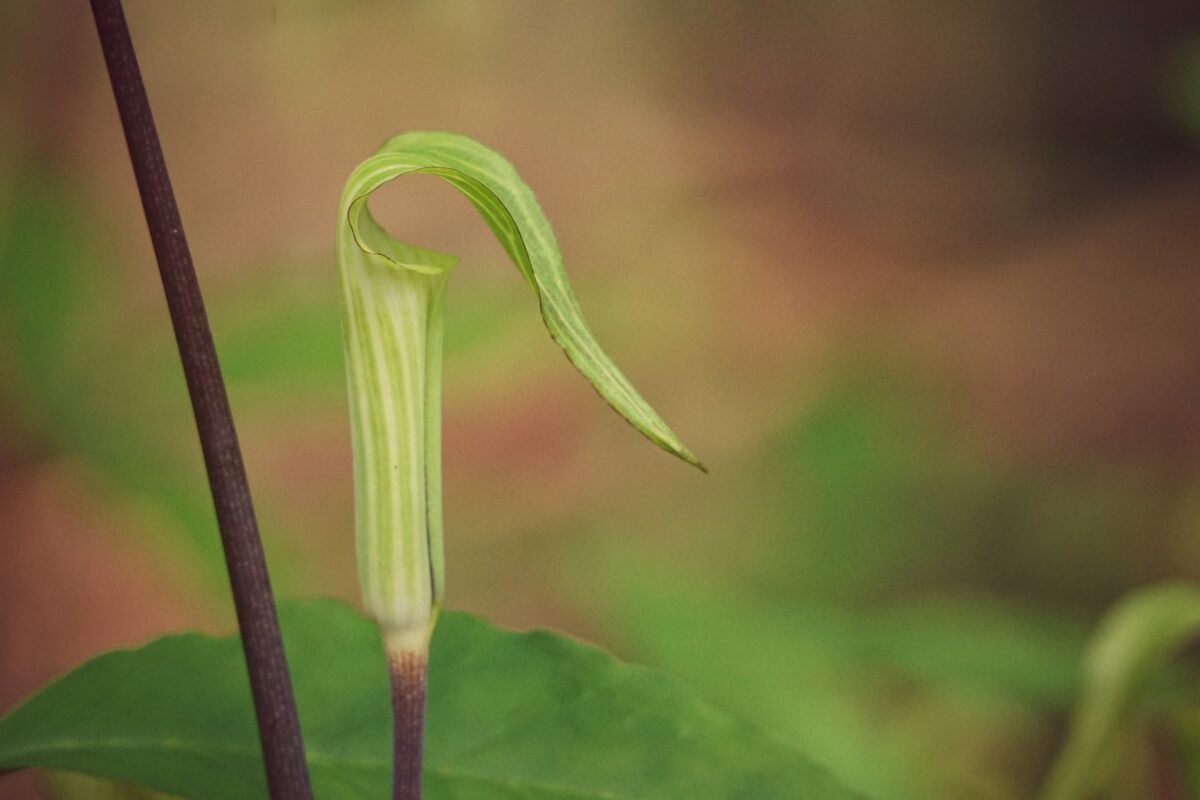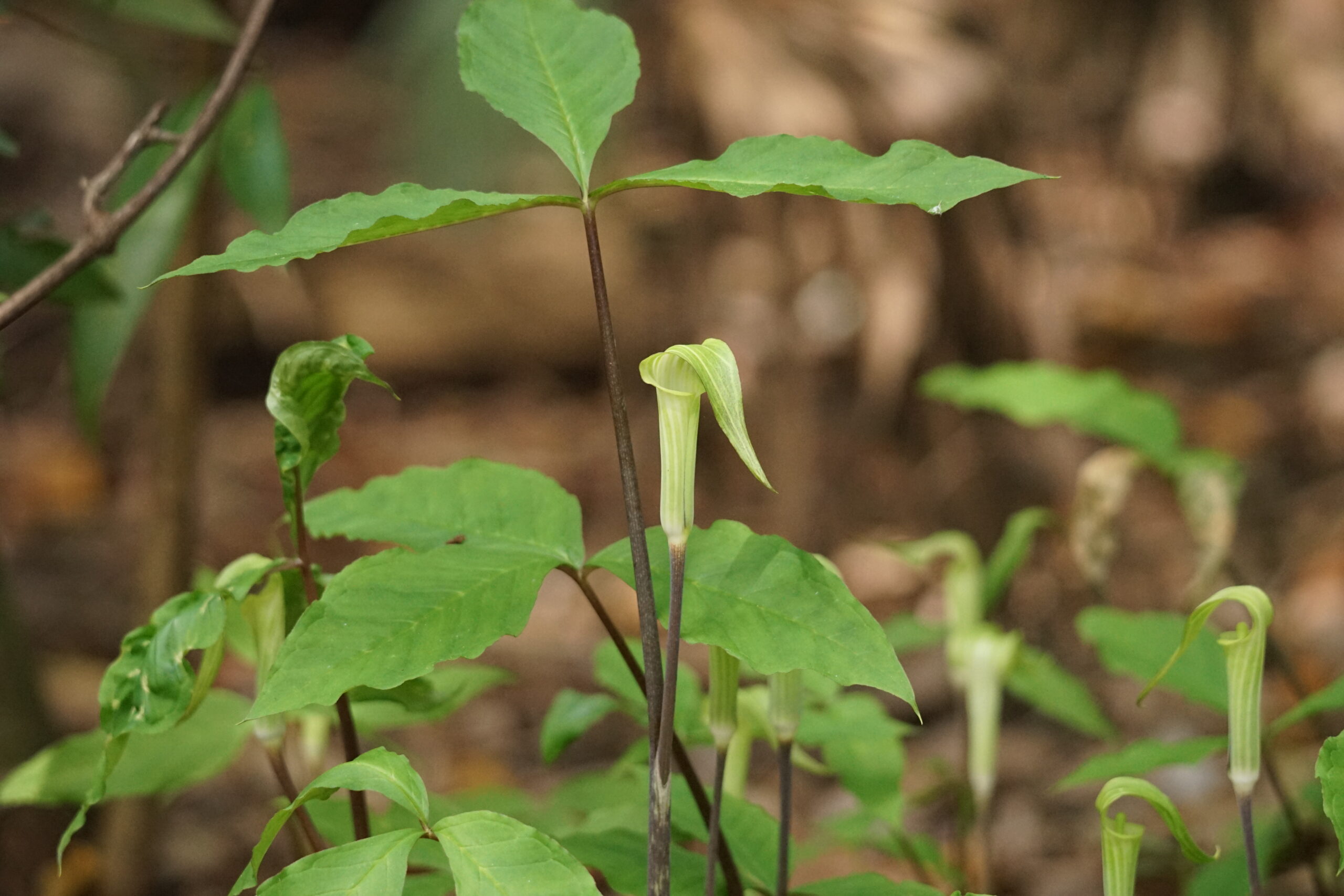Jack-in-the-pulpit
Pictured above: Jack-in-the-pulpit (Arisaema triphyllum) by Emily Bell. Click on terms for botanical definitions. View post as a PDF.
Some of our most unique and unusual wildflowers grow in the shade of floodplain and deciduous forests, including the intriguing Jack-in-the-pulpit (Arisaema triphyllum). While there are a number of documented uses of the dried corm by Native Americans including cold and flu relief and treatment for snake bites, all parts of this plant are very toxic to humans in raw form — the culprit being high concentrations of calcium oxalate. This toxicity doesn’t transfer to other wildlife, however. Black bears are known to pull them and snack on the corm, deer nibble the roots, and many birds enjoy the fruits.
Jack-in-the-pulpits emerge from winter dormancy each spring as purplish-brown spikes that unfurl into the characteristic stem, terminating with 1-2 leaves, each comprised of 3 elliptic to ovate leaflets and a flower stalk. Tiny flowers bloom on a light green spadix (jack), surrounded by a hooded spathe (the pulpit). The spathe can be light green or purple and has light green to almost white vertical stripes. In early summer, the spathe withers, revealing the bright red berries of fertilized female plants.

Fungus gnats, their primary pollinator, are lured down into the spathe by its color and the fungus-like odor it emits. The gnats collect pollen from the male flowers and exit through a hole at the bottom of the spathe. The female flowers have no such escape hatch; once a gnat enters, it delivers pollen from the male flower, and is then trapped and often dies there. Adding to the intrigue of this long-lived perennial (25+ years), it has the ability to change from male to female or vice versa from year to year. It is theorized that this is an energy conservation measure as some plants produce male flowers until they have enough energy stored in the corm to produce fruit, at which time female flowers will develop. Once that fruit producing energy is expended, the plant reverts back to male and the cycle begins again.
Family: Araceae (Arum family)
Native range: Documented throughout peninsular Florida with exception of the southernmost counties and into the Panhandle
To see where natural populations of Jack-in-the-pulpit have been vouchered, visit florida.plantatlas.usf.edu
Hardiness: Zones 8A–10A
Lifespan: Perennial
Soil: Moist rich loam
Exposure: Partial to full shade
Growth habit: Erect, 1-2 feet tall
Propagation: Division of cormlets or seed
Jack-in-the-pulpit plants are not commercially available. Visit a natural area to see them.

